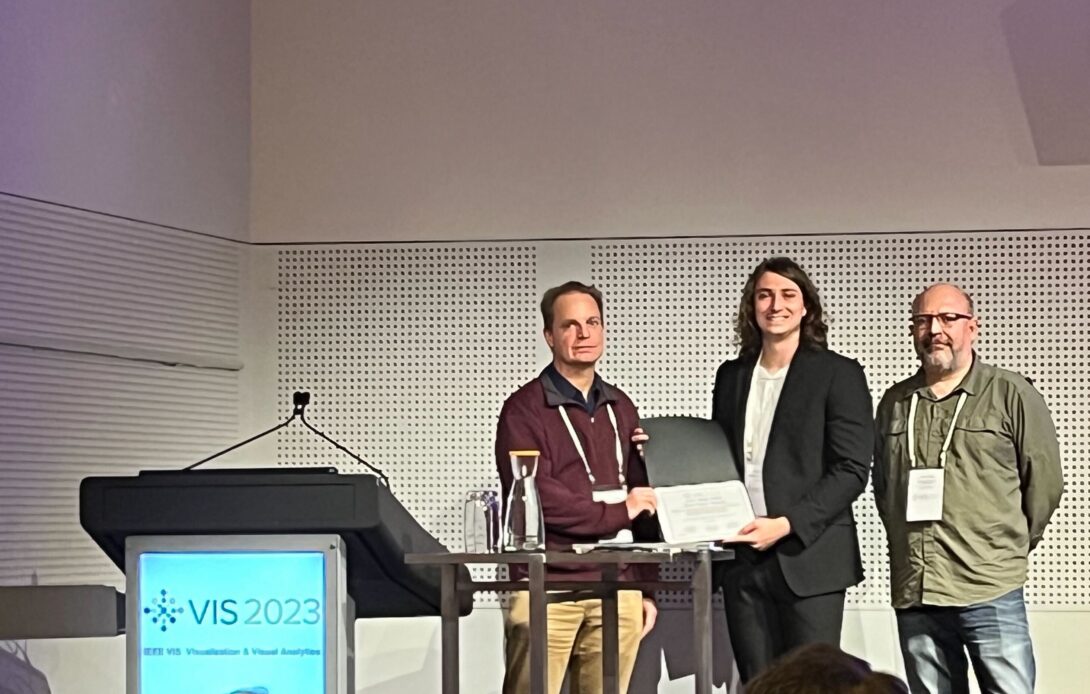Kumar, Dyken receive best paper award
Computation method can visualize large-scale datasets entirely in web browser
Kumar, Dyken receive best paper award Heading link

Assistant Professor Sidharth Kumar, his graduate research assistant Landon Dyken, and Will Usher, a scientific visualization engineer with tech company Luminary Cloud, received a best paper award at the 13thIEEE Symposium on Large Data Analysis and Visualization, held in October.
Their paper, “Speculative Progressive Raycasting for Memory Constrained Isosurface Visualization of Massive Volumes,” focuses on developing new algorithms that can take advantage of the computationally powerful general processing unit (GPU) in the web browser.
While new web technologies allow for accessible scientific visualization applications to be run in a browser, they don’t address the memory constraints of typical laptop or desktop computers. Visualizing the massive amount of information produced by simulations, or by systems that compile large amounts of data requires large, powerful, expensive high-end workstations.
“This research utilizes modern webGPU technology to enable complex visualization and analysis capabilities directly within web browsers,” Kumar said. “By leveraging webGPU’s computational power natively on the browser, we have developed scientific visualization tools that are accessible to a much wider audience without sacrificing functionality.”
Kumar, Dyken, and Usher’s research demonstrates the feasibility of creating large-scale, portable scientific applications that can be run on the web browser, rather than using only a computer’s memory. The trio proposed an isosurface rendering algorithm that decompresses blocks of data on demand, using the parallel computing power available on even lightweight end-user devices, which allows for calculations or processes to be carried out simultaneously.
Their algorithm achieved a reduction in memory space used on even a lightweight computer by 1.7 to 5.7 times and reduced the amount of data being decompressed to visualize a dataset by up to 8.4 times what would normally be required.
“Winning the best paper award at the LDAV symposium, a prestigious fixture of the IEEE VIS conference, has been an honor,” Kumar said. “Our paper has also garnered further recognition, having been selected for invitation to an extended publication in IEEE Transactions on Visualization and Computer Graphics.”
Kumar joined the CS department this fall as an assistant professor. His research lies at the intersection of high-performance computing, data analytics, and artificial intelligence.